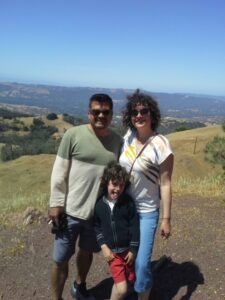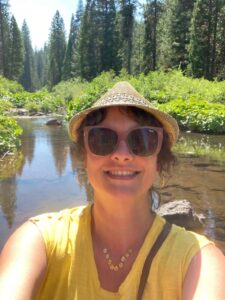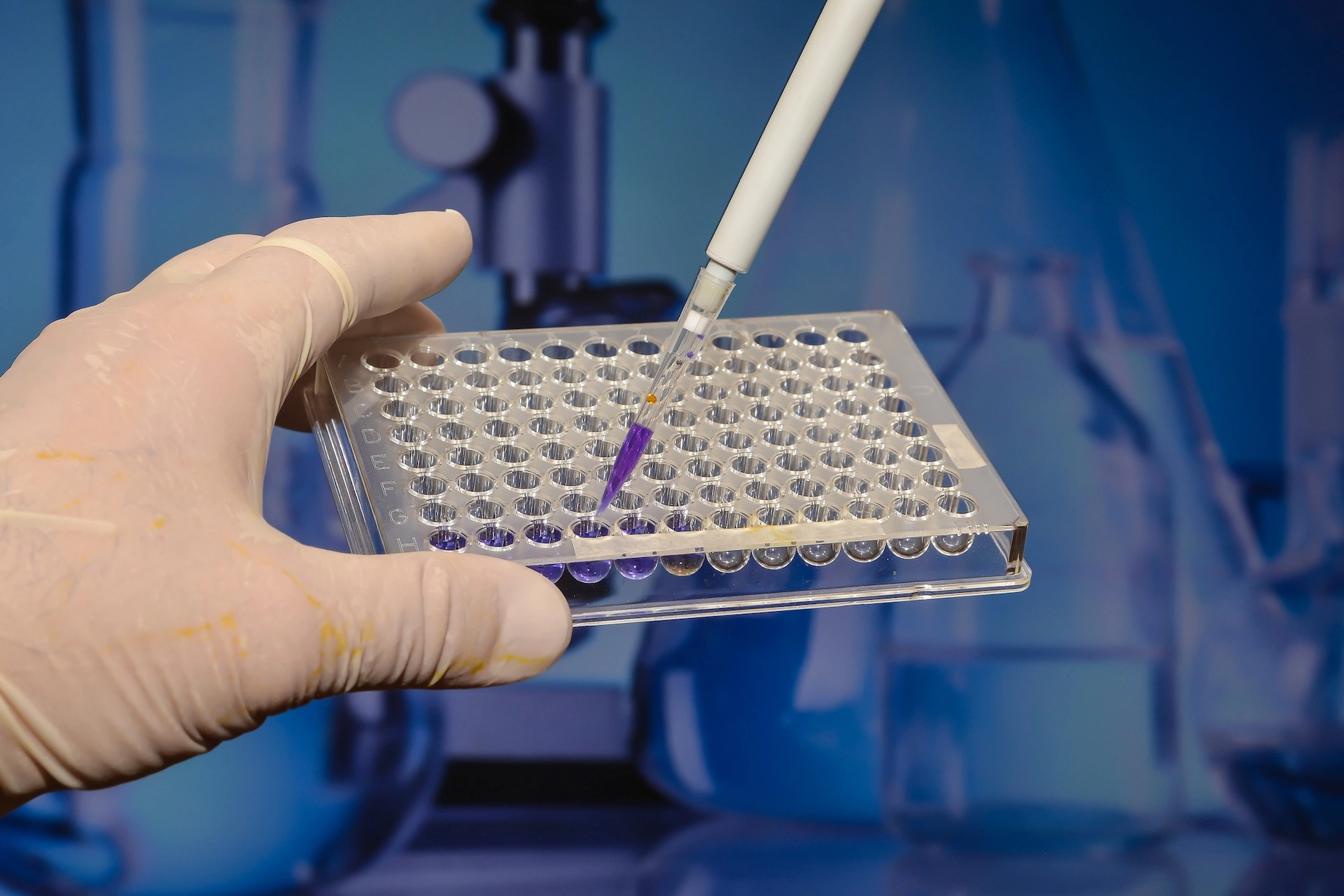A childhood in nature leads to a career parsing the complexities of the human genome
Researcher Hélène Choquet, PhD, grew up in a small French town where she was fascinated by insects in her family’s garden, bringing them home to watch up close, to her mother’s dismay. Choquet was in college studying biology when she heard about the first complete sequencing of the human genome. That spark would lead Choquet to a career as a research scientist at the Kaiser Permanente Division of Research (DOR), exploring the genome for answers to important questions about the origins of disease.
Choquet answered our questions about how she got into the field and came to DOR.
How did you become interested in research as a career?
I grew up in France, in a small town called Fretin, which is in the north near Lille. I spent a lot of time outdoors observing bugs, playing with ladybugs and things. When I chose subjects for high school, I took science with a lot of biology, mathematics, and physics. I decided to go to the university in Lille, and I earned a master’s degree in biology of populations and ecosystems. I enjoyed this time because we were going outdoors a lot, for example, to observe and learn how to identify local birds.

I also spent several weeks at the Marine Station of Wimereux to learn more about the seaweed and the marine fauna of the Manche Sea. Even though we had to get up super early because of the tides to do observations and collect samples on the beach, and we were often exposed to freezing rain, I was so happy to be there. Later, I volunteered for a society on bird and wildlife protection.
How did you choose genetics to study?
While I was studying for my bachelor’s degree, the first complete sequencing of the human genome was published. I heard this news and became interested in human genetics and took some classes. Then, I completed a summer internship in a laboratory at the French National Center for Scientific Research, Institute Pasteur of Lille, which is one of the leading groups in the field of the genetics and genomics of metabolic diseases. I just loved it! After obtaining my master’s degree, I joined the same laboratory as a research assistant. It was there I was caught up in the competition to be the first person to discover the gene for a disease.
As a research assistant I did some technical genetic work such as sequencing and genotyping along with functional — wet lab — work to study functional characteristics of a key gene involved in the regulation of appetite. We were working in collaboration with a molecular biologist who was a specialist in this gene. He had a lab at the University of Leuven in Belgium, and I offered to go there to perform the wet lab work under his supervision. This was in the Dutch-speaking part of Belgium and I could understand nothing! But that work resulted in important results demonstrating the role of this gene, which led to the publication of an article in Nature Genetics. This experience motivated me to shift from a research assistant position to a research scientist career. I went back to the lab in Lille to complete my PhD in human genetics quickly, in just 2 years.
Researching genetics can offer important insights into the molecular basis of the disease … and develop predictive models … which could lead to personalized treatment.
After obtaining my PhD, I came to the United States as a postdoc research fellow to gain some skills in genetic statistics and genetic epidemiology at the University of California, San Francisco (UCSF), Ernest Gallo Clinic and Research Center. Former DOR Investigator Eric Jorgenson was my mentor. Unfortunately, the Gallo Center closed, so I did a second postdoc research fellowship at the UCSF Center for Cerebrovascular Research. Once Eric joined DOR, obtained grants and was able to hire people, he asked me to join his team at DOR.
What areas of genetics do you study now?
The main focus of my current research is to identify the genetic factors that influence the risk of the main causes of blindness, including glaucoma and cataracts. I am very excited that I just got a 4-year grant from the National Eye Institute to study genetic and non-genetic factors underlying cataract susceptibility and develop a prediction tool to facilitate risk-stratified screening for cataract.

My second research focus is to identify the genetic factors that influence non-melanoma skin cancers, including basal cell carcinoma and squamous cell carcinoma, and to examine how environmental risk factors influence genetic risk. For this project, I’m working closely with DOR adjunct investigator Maryam Asgari, who is a professor of dermatology at Massachusetts General Hospital.
I believe that researching genetics can offer important insights into the molecular basis of the disease that could lead to the development of treatments that target a specific molecule. It can also help us develop predictive models to identify patients at risk of disease, which could lead to personalized treatment.
How does being at DOR influence your work?
To identify genetic associations with disease traits, it’s important to have samples from a large group of individuals to find statistically significant patterns. Further, if we have samples only from individuals of European ancestry, we could miss important genes present in other ancestry populations. At DOR, I feel fortunate to work with a large and ethnically diverse resource managed by the Kaiser Permanente Research Bank, that includes the Genetic Epidemiology Research on Adult Health and Aging (GERA) cohort. The GERA cohort includes genome-wide genetic data and medical records for about 100,000 members of Kaiser Permanente Northern California, and was developed as part of the Research Program on Genes, Environment and Health (RPGEH) with leadership from my DOR colleague and mentor, Catherine Schaefer. The GERA cohort has been an exceptional resource for investigating questions related to my areas of interest.

Working at DOR also gives me the opportunity to work closely with talented researchers in an amazing environment and to connect with KP physicians. In the 6 years I’ve been here, I’ve developed close collaborations with Ronald Melles, an ophthalmologist, cataract surgeon, and medical informaticist, on the genetics of eye diseases, and Rouzbeh Mostaedi, a general and bariatric surgeon, on hernia genetics and response to bariatric surgery. Having their perspective to better understand disease is just so helpful.
What do you like to do in your free time?
I love to be outdoors and hike, especially around the Mount Diablo area. I also love to swim, at least once a week. My husband, Tino, and I have one son, Santolin. I also have 2 adult stepdaughters, Milia and Tiana. We enjoy spending time all together around a good meal and playing games. I enjoy reading books in French when I can find the time. I also love cats and working from home gave me the opportunity to adopt a cat, Mimine, and I’m so happy about that. She’s always by me when I’m working.





This Post Has 0 Comments